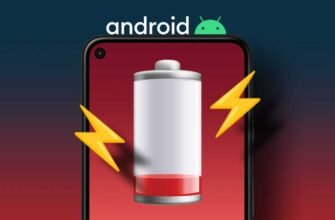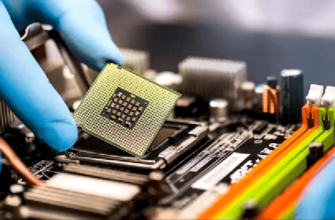Laptops and computers require maintenance (software and hardware), but there are certain guidelines to follow for optimization. For this, we have collected all the key information.
It is true that we can speed up the PC by updating components, but sometimes the problem is related to the software.
The computer must be used with care to prevent it from slowing down later. But not everyone knows it or is interested in it. So, we're going to compile a series of tips, programs and life hacks to make your computer faster.
Remove unnecessary applications
First of all, let's start with the classic PC optimization tip: remove applications you don't use. Why? For two reasons:
- They take up space on the hard drive.
- Many of them run in the background, consuming RAM and CPU.
Most of you are reading this article because your computer is not working very well, and one of the reasons may be just that.
If you also have a rather old computer, removing programs that you do not use will give a considerable increase in speed.
Often we find installed programs that we don't even know what they are for, or we don't remember installing them. This is because many installers "hide" additional installations from other programs for advertising purposes.
For example, we can install a PC optimization program and receive McAfee antivirus "as a gift".
Startup settings
Another classic recommendation is to configure the login so that the computer uses all cores and threads. You also need to remove unnecessary programs from autorun. Sometimes we install programs that start automatically every time we log in, which loads the CPU and RAM immediately after starting.
To take control, do the following:
Open the menu Pusk and enter msconfig -> execute the option "System Configuration".

After opening, we go to the tab Loading, we choose Additional parameters, check the option Number of processors and select the maximum value. Then we press OK.

Then we go to the tab Services and remove the flags from all manufacturers, except Microsoft Corporation and which do not offer us any useful utilities. For example, you can uncheck the box AdobeUpdateService, because it is a service that allows automatic updates Adobe Reader.

Go to the tab "Autoboot", to configure the programs that start when Windows starts. On Windows 10, you will be prompted to go to Task manager. Here you will find all the programs that start automatically.

Track which processes consume the most resources
This tip not only serves to optimize the PC, but is also very useful for managing our computer and determining which program or process is causing the slowdown. We will only need to open the task manager and understand what we are reading.
You can open it by clicking CTRL+SHIFT+ESC or using CTRL + ALT + DEL (there are other ways). After opening, we go to the tab Processes and look at applications and CPU, memory and disk consumption.

- CPU. It usually shows a low percentage unless we are running a video game or some heavy application.
- Memory. It will depend on the programs we have open, but consumption above 70% will almost certainly slow down the computer.
- Диск. Sometimes the slowdown of the system is not the fault of the RAM or the CPU, but the hard disk. This usually happens to those with regular hard drives and you download a large file, or Windows updates on the same hard drive. This does not happen with SSD.
Defrag your hard drive
This advice is very useful for those who have mechanical hard drives or hard drives that require more maintenance than solid state drives. We know that the defragmentation process can be long on large capacity drives or never done at all. However, this is a necessary action for proper operation.
Just do the following:
- Open the menu Pusk and we are looking for Defragmentation to access the utility.

- A window with your modules will appear, which will indicate which of them were defragmented (optimized) and last time. Select the desired drive and click "Optimize".

Install the operating system on the SSD
Installing Windows / OS X / Linux on an SSD seems like an obvious thing to do, but there are still people who don't know about the benefits of buying an SSD and installing an operating system on that drive. Everything speeds up: starting up, running programs, opening Windows Explorer or creating copies.

Keep in mind that the transfer speed (read or write) of hard drives usually does not exceed 200 MB/s. However, SSDs start at 400MB/s, not to mention M.2 NVMe or PCIe 4.0 SSDs that reach 3000-7000MB/s. But the laptop must have a slot for NVMe.

If you don't have a big budget, you can use the hard drive to store programs, video games or heavy data, leaving the SSD only for the OS and vital applications (web browser, text editors or some programs you use frequently).
Optimize your PC with CCleaner
We recommend CCleaner because it is a simple program, it weighs little and is free (with the possibility of a paid version) to use; not only that, but it is really useful for those who need to optimize their PC.

What is it for? Among its functions, I would like to highlight the following:
- Cleaning temporary "unnecessary" files that remain on our PC and only take up space.
- System optimization.
- Cleaning the registry, fixing possible errors.
- Uninstalling programs, installation are launched independently, etc. (For example, startup options).
- Disk analysis.
- Improperly installed or remnants of deleted drivers.
Clean up the hard drive
By "cleaning" we mean removing things you don't need, such as accessing the hard drive cleaner that Windows offers you. You probably don't need to be told how to delete files in Windows, but you may not know the tricks of the Hard Disk Cleanup tool:
- We open Conductor Windows and enter "this computer".
- Right-click on the hard disk that is full or on which the operating system is installed, and give it "Properties".
This window will open and we will do the following:
Check the box "Compress this disk to save disk space" (but only if it's not an SSD).
Let's press Disk Cleanup.

- You select all options and the accumulated GB are deleted. Then, to clear files from the system, select Clean up system files.
- At the same time, as a result, you will see that more files are deleted than you thought.

Power supply settings
This PC optimization tip is suitable for laptops that are slow, have been in use for a few years, or that we just want to speed up.
Press the right mouse button on Start and choose Power supply management.

We choose there Additional parameters of consumption.
Windows configures several profiles for different needs:
- Minimum: Saves a lot of battery power, but has poor performance.
- Balanced: it aims to provide good performance without greatly affecting autonomy.
- High productivity: Provides maximum performance while reducing battery life.
In this case, if you want your laptop to speed up or provide more performance, you should go for it High productivity, to use all possible equipment. The increase in productivity will not be drastic, but you will feel the change.
Change the video card (built-in to dedicated in laptops)
If you're going to run an application or video game that requires GPU load, the smartest solution would be to activate your laptop's dedicated GPU. This advice is aimed at optimizing your PC if you have a laptop with integrated graphics and a dedicated NVIDIA or AMD GPU.
By default, Windows uses built-in, which is necessary to activate a dedicated video card from the NVIDIA or AMD control panel. To do this, you need to open the specified control panel and find the following option:

Appearance-related performance parameters
The entire Windows 10 GUI consumes resources, and this is noticeable on computers with less power at the hardware level. Aspect "Aero", that is, with transparency in the windows, requires resource consumption. But we can disable it.
To do this, right-click on the desktop and select Personalization.

Then the configuration window will open and then you need to go to "Colors"to disable "Transparency Effects".

Disable search indexing
This tip is really simple and quick and consists of stopping the "Windows Search" service, which, among other things, is responsible for search indexing. Follow these steps:
In the menu Pusk find "Services" and execute the option.

Now find the Windows Search service and disable it by unchecking the box.

Restore the system to the previous image
This option may be useless for many because we will need a previous image created to restore it. This option is useful when the computer starts to slow down from a certain point in time, so we use a recovery image to restore it to its previous state.
Of course, you will lose the currently installed data and programs, because we will return the hard drive to a previous state in which this data may not have existed. This includes the following:

Now click "Open System Restore".

Basically, we select a restore point from the list of results.

For those who don't see the restore point, check the box "Show more restore points".

Scan for viruses
Maybe we're making it difficult when it comes to PC optimization and our computer is performing worse because it's infected, so it's a good idea to check if we have any viruses. Let's see how to scan for viruses using Windows Defender technology:
We are looking for antivirus on the menu "Start"to perform an action.

We press on "Scan Options", we choose "Full Scan" and then click "Verify".

We are waiting for it to finish, and if you have a virus, we will remove it.
Hardware Upgrade: More RAM or CPU
A few more options remain to be considered, and to improve it and increase productivity, it is necessary to turn to the equipment. Possible options without changing the platform:
- RAM memory modules of higher capacity and frequency (if supported by the board).
- A more powerful processor compatible with the board's connector and chipset.
The last option is usually not viable, because it is usually better to change the platform and buy a board, RAM and a new processor. And it is impossible to do this in laptops. It's easier to think about buying a new one.





